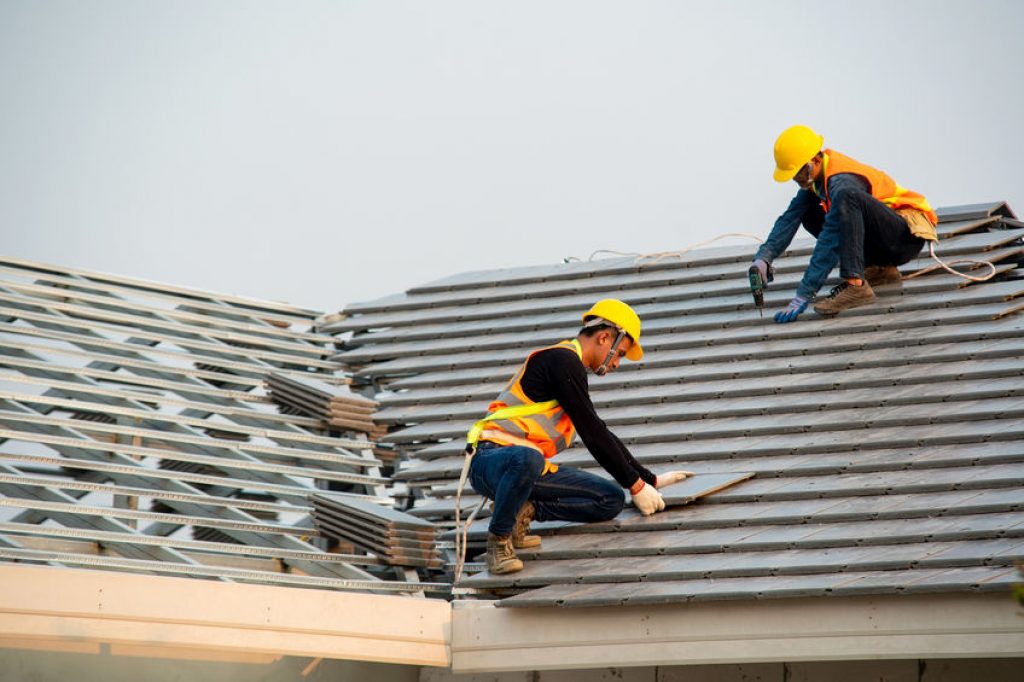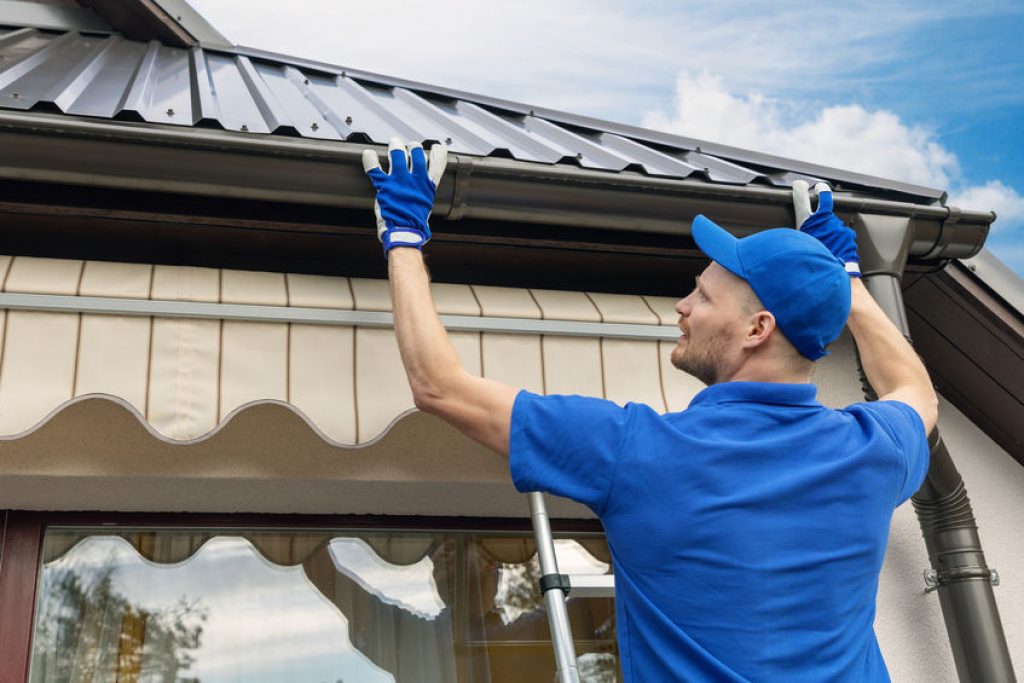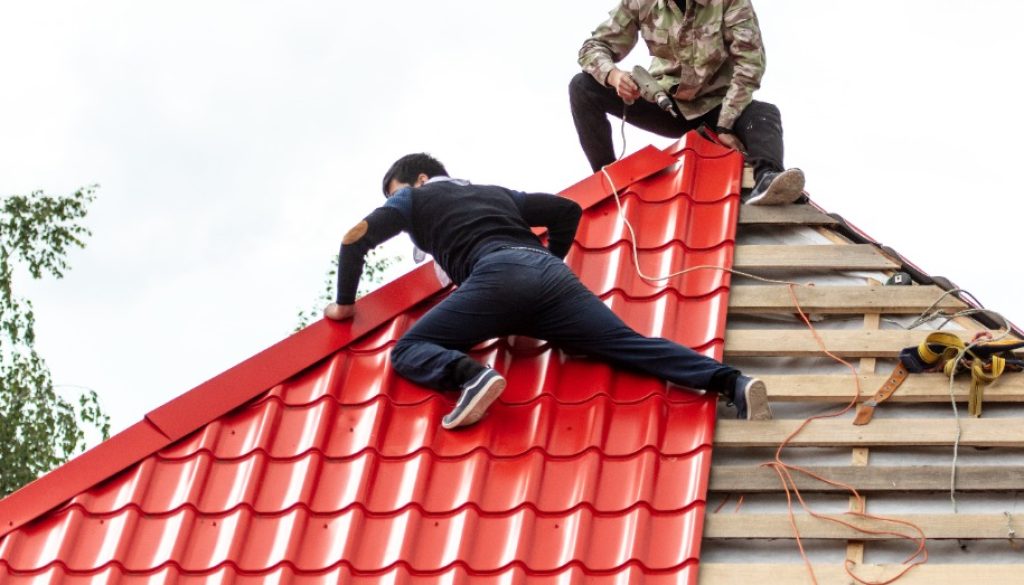19 Safety Tips for Protecting Roofing Workers
Working on a roof is one of the most dangerous jobs in construction. By following these safety tips, you can help protect roofing workers and ensure that everyone stays safe while working on a roofing project.

1. Provide workers with the proper safety gear and clothing
Safety helmets, gloves, goggles and other protective clothing should be provided to all employees who will be working on a roof. It is also important to ensure that the safety equipment fits properly and provides adequate coverage.
Additionally, using harnesses can help to reduce the risk of a serious fall. In addition to providing safety equipment, employers should also provide workers with appropriate training on how to safely work on a roof.
Training should include assessing potential hazards, understanding and following safe working procedures, proper use of tools and equipment and the importance of wearing protective clothing and gear at all times.
2. Make sure ladders are secure
When using a ladder to access a roof, it is important to ensure that the ladder is secure before beginning any work. This can be accomplished by following these steps:
- Inspect the ladder for signs of wear or damage prior to use. Replace any worn or broken parts before setting up the ladder.
- Choose an appropriate spot to set up the ladder. Make sure it is stable, level and on firm ground with an adequately wide base for support.
- Use a ladder stabilizer or tie-off system if possible. This will help keep the ladder steady even in windy conditions and ensure that it does not shift unexpectedly during use.
- Use a spotter to help secure the ladder while it is in use. This person should be able to monitor the ladder and provide assistance if needed.
- Position the ladder at a safe angle. The ideal angle for safety when using a ladder is approximately one foot away from the wall for every four feet of ladder height.

3. Ensure surfaces are dry
The surface should be dry before a roofing worker begins any work on the roof. Moisture can increase the risk of slipping and falling, and wet surfaces may also damage materials being used in the installation or repair process.
To ensure surface dryness, workers can use tarps to cover areas with standing water, sweep away debris and puddles, and ensure that the roof has adequate drainage in case of rain. If a surface is wet, workers should use absorbent materials like sawdust or sand to soak up the moisture before continuing work.
For extra protection, workers can also wear safety gear like non-slip shoes and harnesses. Additionally, they may consider using protective mats or railings in areas of high traffic. With these precautions, workers can be sure to stay safe on the job and complete their roofing projects with ease.
It is also important that the roofing material itself is dry before installation. If necessary, workers should use a fan or other air circulation tool to ensure that any existing moisture has been dried out. Additionally, workers should first replace any damaged or warped shingles before beginning the installation process to ensure a secure and watertight roof.
By following these steps, workers can protect themselves and their work from hazardous conditions while on the job.
Finally, it is important to check the weather forecast in advance so that workers can plan around inclement weather if needed. If heavy rain or snow is in the forecast, it may be necessary to postpone any outdoor roofing projects until the weather improves. By taking these steps, workers can ensure that their roofs are dry and safe for a successful installation process.
It is also important for roofing workers to be familiar with the latest safety regulations and protocols for their area or state. By staying up-to-date with these requirements, workers can be sure to keep themselves and others safe on the job.
4. Have emergency plans in place
When preparing emergency plans for protecting roofing workers, it is important to consider the various hazards that can occur on a job site. Employers should be sure to provide workers with appropriate safety training and equipment, including sturdily secured guardrails, harnesses, ladders and other necessary tools. All workers should also be briefed on the proper use and maintenance of the equipment.
In addition, employers should have a system in place for responding to weather-related emergencies. This includes having an evacuation plan and procedure in case of extreme wind, snow or ice storms that could lead to roof collapse or other hazards. Employers should also provide workers with the tools they need to safely exit the roof in the event of an emergency.
When developing emergency plans for protecting roofing workers, it is also essential to include procedures for ongoing maintenance and inspection of the job site. This should involve checking for any potential hazards or safety issues, such as loose shingles or debris blocking access points, as well as ensuring that all tools and equipment are in good working order.
Finally, employers should make sure that their emergency plans for protecting roofing workers are communicated to employees on a regular basis. This includes providing training and instruction on the proper use of equipment, as well as ensuring workers understand all safety procedures related to their job duties. With the right preparation and communication, employers can help ensure their roofing workers are as safe as possible.

5. Use the right equipment
When protecting roofing workers, the equipment used should be appropriate for the job. It is important to read labels and instructions for any equipment you are using and make sure to follow the manufacturer’s recommendations.
The following types of personal protection equipment (PPE) are recommended when working on a roof:
- Hard hats: Hard hats should be worn to protect workers from head injuries caused by falling objects.
- Eye protection: Safety glasses and goggles should be used to protect workers from flying debris, dust, and chemicals.
- Footwear: Sturdy work boots with steel toes are essential for protecting feet and ankles while working on a roof.
- Respiratory protection: Masks and respirators should be used when working with fumes, dust, and other airborne substances.
- Gloves: Wear gloves to protect hands from sharp objects, chemicals, and extreme temperatures.
- Protective clothing: Long pants and long-sleeved shirts should be worn to protect skin from sunburn, abrasions, and other hazards.
It is also important to ensure that all workers are using the same type of safety equipment and that it is being used properly. The employer should provide training and instruction on how to use the PPE correctly and should inspect each item before every use. By taking these steps, roofing workers will be better protected from potential injuries and accidents.
When it comes to protecting roofing workers, the right equipment can make all the difference. By following manufacturer’s instructions and taking the necessary safety precautions, you can ensure that your workers are as safe as possible when working on a roof.
6. Train all workers in safety procedures
Training all workers in safety procedures for Protecting Roofing Workers is a vital part of any successful roofing business. All workers should be properly instructed on safe work practices and have access to the latest safety equipment before they begin work. This can help protect both the worker and company from potential risks or hazards associated with roofing activities.
The first step in training workers is to provide them with safety materials that are tailored to the type of work being performed. This may include information on ladder safety, fall protection, and working on steep or slippery surfaces. It is also important for workers to be trained in proper use and maintenance of tools so that they can safely perform their tasks.
In addition to providing basic safety materials, employers should also provide regular refresher courses and on-the-job training. This can help ensure that workers are up to date on the latest safety practices and regulations. Training should be tailored to the specific job being performed, as roofing activities may involve different hazards than other types of construction.
Employers should also encourage workers to report any unsafe practices or conditions that they observe. This can help employers identify and correct potentially hazardous situations before an accident occurs. Regular safety meetings are also a great way for employers to remind workers of their obligations when it comes to roofing safety.
Finally, employers should ensure that all necessary safety equipment is provided to workers. This may include fall protection systems, appropriate personal protective equipment (PPE), and ladders that are of the proper length and weight capacity for the job. By providing workers with the necessary safety materials, employers can help protect their workers from potential hazards on the job.
7. Have regular safety meetings
Having regular safety meetings for protecting roofing workers is essential for reducing the risk of accidents, injuries and fatalities. Safety meetings should include discussions about proper work techniques, tools and equipment, as well as identifying potential hazards on the job site.
It’s also important to ensure that all employees understand their individual responsibilities and roles in maintaining a safe work environment.
During the meeting, make sure that all employees are given a chance to ask questions and raise any safety concerns they may have. Additionally, ensure that workplace safety protocols are reviewed and reinforced during the meetings. Finally, supervisors should be available to answer employee questions or address any issues that arise during the meeting.
8. Be aware of environmental hazards
Roofing workers are exposed to many environmental hazards on a daily basis, some of which can lead to serious health problems and even death. Most roofers work with materials that contain hazardous substances such as asbestos, lead, and solvents.
Additionally, they often work in high places, in extreme temperatures, or near potential sources of electrical shock. To ensure the safety of roofing workers, employers should take steps to identify potential hazards and institute measures to minimize risk.
Lastly, employers must provide regular health checks for roofing workers to detect early signs of any health problems related to their job. By taking these steps, employers can help protect their workers and ensure they remain healthy and safe on the job.
9. Determine fall protection requirements
There are several factors that must be taken into consideration when determining the fall protection requirements for protecting roofing workers.
- The type of roof: Different types of roofs require different fall protection measures to protect workers from falls. Flat and low-slope roofs typically require guardrails and safety nets, while steep sloped roofs require additional fall protection such as personal fall arrest and restraint systems.
- The height of the roof: When working on a roof more than 6 feet above the ground, workers must use appropriate fall protection equipment to prevent falls from occurring. This could include guardrails, safety nets, or personal fall arrest and restraint systems.
- The environment: Depending on the overall work environment, additional protection may be necessary to protect workers from falling objects or other hazards in the area. This could include additional guardrails, debris netting, or overhead covers for added protection.
- Accessibility of the roof: If a worker is accessing the roof via an aerial lift, additional fall protection measures may be necessary to protect them from falls. This could include personal fall arrest systems, lanyards, or guardrails that can be used on the lift as well as the roof.
10. Secure equipment and materials
The safety of roofing workers is a top priority for employers. The following steps should be taken to ensure that necessary equipment and materials are secured in order to protect employees:
- Install anchor points wherever possible – Anchor points provide an attachment point for safety harnesses, ropes and lanyards which can help prevent roofers from slipping and falling.
- Ensure that equipment is in good condition – Before using any tools or materials, inspect them to make sure they are not worn or damaged.
- Install guardrails around the perimeter of the roof – Guardrails should be installed on tall buildings to prevent workers from slipping off of the edge of the roof.
- Provide appropriate fall protection equipment – Make sure that roofers are outfitted with the appropriate safety equipment such as harnesses, lanyards, and lifelines in order to ensure their safety if they should fall.
- Store materials safely and securely – Materials such as tiles, shingles and other debris should be stored away from the edges of the roof, and secured if possible.
- Use scaffolding when necessary – Scaffolding can provide a stable platform for workers to work on rather than having them balance on the edge of the roof.
11. Maintain regular maintenance
Properly maintain all tools and equipment used by roofing workers to ensure that they are in good working order.
12. Keep walkways clear
All walkways should be kept clear to reduce the risk of tripping and falling.
13. Wear protective eyewear
All roofing workers should be wearing appropriate protective eyewear to reduce the risk of eye injuries from debris or chemicals.
14. Utilize guardrails and barriers
Guardrails and other barriers should always be used when working on a rooftop to prevent falls or slips.
15. Do not overload ladders
Ladders should never be overloaded with equipment, materials, or workers as this can cause them to become unstable and increase the risk of falls.
16. Use caution when working near power lines
Make sure that all roofing workers are aware of the potential dangers posed by overhead power lines and take the necessary precautions to avoid contact.
17. Utilize tools with safety features
Make sure that all of the tools and equipment used by roofing workers are equipped with appropriate safety features, such as guards and exhaust systems.
18. Regularly inspect worksites
All roofs should be regularly inspected to make sure that they are free of any hazards or defects.
19. Follow proper first aid protocols
All roofing workers should be trained in basic first aid and CPR procedures, and all work sites should have a fully stocked first-aid kit on hand at all times.
Final thoughts
Roofing business insurance is also available to cover any incidents or accidents that may occur. It is important for employers to make sure that their workers are properly insured and protected from any potential risks.
Additionally, all roofers should be trained in proper safety procedures before beginning work on a rooftop, as well as periodically retrained in order to remain up-to-date on the latest safety protocols. This will help to ensure that everyone is aware of the potential hazards and dangers associated with roofing work and how to stay safe on the job. Thank you for your time!
We hope this article was helpful in providing information about the 19 Safety Tips for Protecting Roofing Workers. Please feel free to share this article with your friends and colleagues who are involved in the roofing industry, or anyone else who may benefit from this information.
Remember, safety is everyone’s responsibility! By following these tips, we can all ensure that those working on rooftops remain safe and protected. Thank you for reading!

